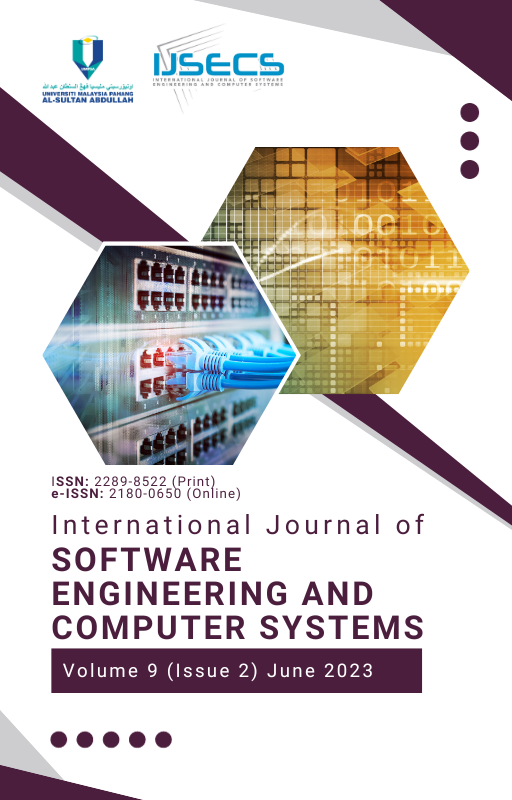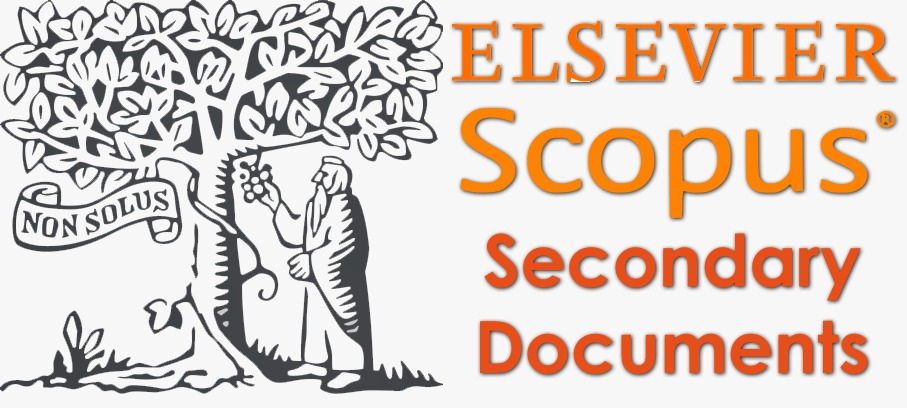OPTIMAL SELECTION OF THE CLUSTER HEAD IN WIRELESS SENSOR NETWORKS BY COMBINING PARTICLE SWARM OPTIMIZATION AND EFFICIENT GENETIC ALGORITHM
DOI:
https://doi.org/10.15282/ijsecs.9.2.2023.6.0117Keywords:
Clustering, Wake-up sleep algorithm, Efficient Genetic Algorithm, Particle Swarm Optimization, Wireless Sensor NetworksAbstract
Wireless Sensor Networks (WSNs) have become a crucial component of numerous applications, including the military, healthcare, and environmental monitoring. A promising approach to increasing the lifespan of the sensor network is cluster-based WSNs. In WSNs, choosing the best cluster head is a crucial task that has an impact on the network's performance and energy efficiency. There are various issues with current methods for choosing the cluster head, including nodes dying too soon, uneven energy usage, and shorter network lifetimes. Moreover, traditional methods such as Randomized Clustering and Fixed Cluster Head are not effective in prolonging the network lifetime as they do not consider the energy consumption and residual energy of nodes. In this paper, an optimal selection of cluster head is presented where we combine the Particle Swarm Optimization (PSO) and Efficient Genetic Algorithm (EGA). Firstly, PSO is used to randomly select the cluster head and update the position of each cluster. Thereafter, EGA invokes its fitness values to select the best cluster head that transmits information to the base station. The simulation result shows that the performance improvement of the proposed method PSO_EGA in terms of network lifetime is 0.10% against Improve Cuckoo Search Algorithm (ICSA) and 0.20% against Hybrid Crow Search Algorithm (HCSA), packet to cluester head is 7% against ICSA and 16% against HCSA, packet to sink is 11% against ICSA and 22% against HCSA and number of alive node is 28% against ICSA and 48% against HCSA. Therefore, our proposed method outperforms ICSA and HCSA in terms of the aforementioned parameters.
References
H. Yetgin, K. T. K. Cheung, M. El-Hajjar, and L. H. Hanzo. "A survey of network lifetime maximization techniques in wireless sensor networks."IEEE Communications Surveys & Tutorials,” vol.19, no. 2, pp. 828-854, 2017.
S. Randhawa, and S. Jain. "Multi-objective Data Aggregation for Clustered Wireless Sensor Networks." InProgress in Computing, Analytics and Networking: Proceedings of ICCAN 2017, pp. 393-406, Springer Singapore, 2018, doi:https://doi.org/10.1007/978-981-10-7871-2_38 393-406.
T. Sujithra, and R. Venkatesan. "Genetic algorithm based energy efficient data gathering in wireless sensor networks."International Journal of Applied Information Systems, vol.11, no. 2, pp. 1-7, 2016
S. R. Nabavi, V. O. Moghadam, M. Y. F. Hendi, and A. Ghasemi. "Optimal selection of the cluster head in wireless sensor networks by combining the multiobjective genetic algorithm and the gravitational search algorithm."Journal of Sensors, vol.2021, pp. 1-16, 2021, doi: https://doi.org/10.1155/2021/2292580.
B. Singh, and D. K. Lobiyal. "Energy-aware cluster head selection using particle swarm optimization and analysis of packet retransmissions in WSN."Procedia Technology, vol.4, pp. 171-176, 2012,doi: 10.1016/j.protcy.2012.05.025.
R. V. Kulkarni, and G. K. Venayagamoorthy. "Particle swarm optimization in wireless-sensor networks: A brief survey."IEEE Transactions on Systems, Man, and Cybernetics, Part C (Applications and Reviews), vol.41, no. 2, pp. 262-267, 2010, doi: 10.1109/TSMCC.2010.2054080.
P.C.S. Rao, P. K. Jana, and H. Banka. "A particle swarm optimization based energy efficient cluster head selection algorithm for wireless sensor networks."Wireless networks, vol.23, pp. 2005-2020, 2017, doi: 10.1007/s11276-016-1270-7.
P. K. Kodoth, and G. Edachana. "An energy efficient data gathering scheme for wireless sensor networks using hybrid crow search algorithm."IET Communications, vol.15, no. 7, pp. 906-916, 2021, doi: 10.1049/cmu2.12128.
M. Elhoseny, A. Farouk, N. Zhou, M-M. Wang, S. Abdalla, and J. Batle. "Dynamic multi-hop clustering in a wireless sensor network: Performance improvement."Wireless Personal Communications, vol. 95, pp. 3733-3753, 2017, doi: 10.1007/s11277-017-4023-8.
S. Verma, N. Sood, and A. K. Sharma. "Genetic algorithm-based optimized cluster head selection for single and multiple data sinks in heterogeneous wireless sensor network."Applied Soft Computing, vol.85, no. December 2019, pp. 1-21, 2019,doi: https://doi.org/10.1016/j.asoc.2019.105788.
A. Rostami, and M. H. Mottar. "Wireless sensor network clustering using particles swarm optimization for reducing energy consumption."International Journal of Managing Information Technology, vol.6, no. 4, pp. 1-15, 2014, doi:DOI : 10.5121/ijmit.2014.6401.
G. P. Gupta, "Improved cuckoo search-based clustering protocol for wireless sensor networks."Procedia Computer Science, vol.125, pp. 234-240, 2018
Y. Lu, J. Chen, I. Comsa, P. Kuonen, and B. Hirsbrunner. "Construction of data aggregation tree for multi-objectives in wireless sensor networks through jump particle swarm optimization."Procedia Computer Science, vol.35, pp. 73-82, 2014
Downloads
Published
Issue
Section
License
Copyright (c) 2023 Aliyu Zakariyya, Oyenike Mary Olanrewaju, Bashir Ahmad Jamil

This work is licensed under a Creative Commons Attribution-NonCommercial 4.0 International License.







